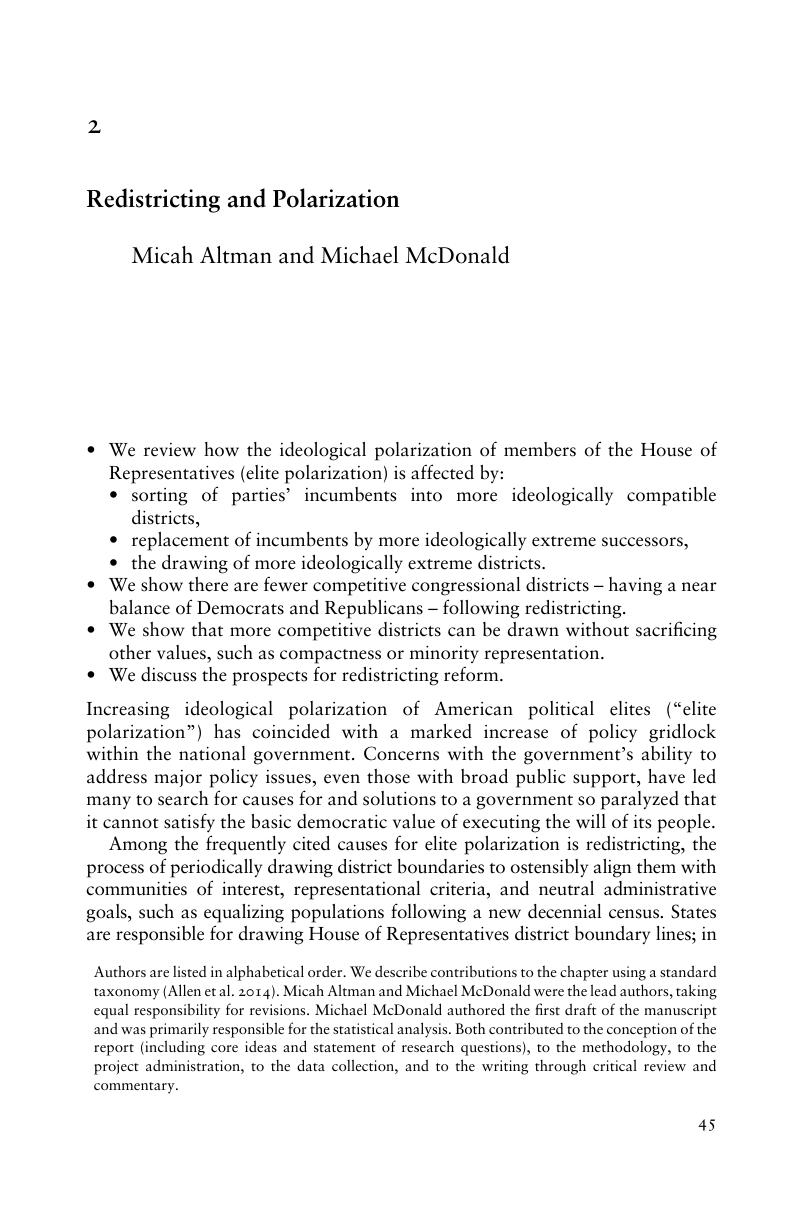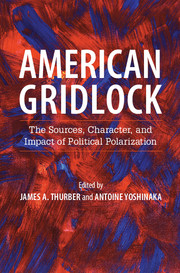Book contents
- Frontmatter
- Dedication
- Contents
- List of contributors
- Foreword
- Acknowledgments
- Introduction
- PART I POLARIZATION AMONG VOTERS AND ACTIVISTS
- 1 The New American Electorate: Partisan, Sorted, and Polarized
- 2 Redistricting and Polarization
- 3 Party Activists, Interest Groups, and Polarization in American Politics
- 4 Authoritarianism and Polarization in American Politics, Still?
- 5 Party Sorting: The Foundations of Polarized Politics
- PART II POLARIZATION IN NATIONAL INSTITUTIONS
- PART III POLARIZATION IN THE STATES
- PART IV POLARIZATION IN THE MEDIA
- PART V IMPLICATIONS AND CONCLUSIONS
- Index
- References
2 - Redistricting and Polarization
from PART I - POLARIZATION AMONG VOTERS AND ACTIVISTS
Published online by Cambridge University Press: 05 November 2015
- Frontmatter
- Dedication
- Contents
- List of contributors
- Foreword
- Acknowledgments
- Introduction
- PART I POLARIZATION AMONG VOTERS AND ACTIVISTS
- 1 The New American Electorate: Partisan, Sorted, and Polarized
- 2 Redistricting and Polarization
- 3 Party Activists, Interest Groups, and Polarization in American Politics
- 4 Authoritarianism and Polarization in American Politics, Still?
- 5 Party Sorting: The Foundations of Polarized Politics
- PART II POLARIZATION IN NATIONAL INSTITUTIONS
- PART III POLARIZATION IN THE STATES
- PART IV POLARIZATION IN THE MEDIA
- PART V IMPLICATIONS AND CONCLUSIONS
- Index
- References
Summary

- Type
- Chapter
- Information
- American GridlockThe Sources, Character, and Impact of Political Polarization, pp. 45 - 67Publisher: Cambridge University PressPrint publication year: 2015
References
- 2
- Cited by



